Review: Koda Rapid 1.2 TSI
Some time ago, I ranted on these pages about European methods of testing fuel mileage (and thus also CO2 emissions), and the way they give unfair advantage to downsized turbocharged engines, compared to good old N/A units. So it’s quite convenient that for my first TTAC European review, I got a Škoda Rapid, powered by a 1.2 TSI turbocharged four-cylinder – a typical example of downsized powerplant. With the Rapid being a relatively small and light family car, the little four-banger may have an opportunity to really shine, and show us whether downsizing works. Or not.
Škoda is a brand that many of you are likely aware of, but are probably unfamiliar with. Thanks to UK buff book road tests, most of you will no doubt know of SEAT, the struggling but scintillating performance brand that makes cut-price GTIs with Audi-like cabins. You’ve probably seen Skoda mentioned in passing in the same publications, and can’t quite comprehend why there is so much overlap in the VW Group lineup.
While Skoda gets most of the same powertrains and chasss as SEAT, it is the “sensible shoes” of the VW Group. In my home country of the Czech Republic, their slogan is “Simply Clever”- and they back it up with a number of thoughful, cheap and quite clever features that make you feel like they went above and beyond just scooping things out of VW’s parts bin. There’s an ice scraper in the fuel door, so you don’t have to open the door to get your ice scraper, a garbage bin inside the door(sadly, not included in the tested vehicle), a clever holder for your smartphone that fits in a cupholder, as well as two-sided carpet in the trunk – a rubber side is for dirty stuff, and a fluffy side is for nice stuff.
But that doesn’t stop Skoda from being the main point of contact for Volkswagen parts bin raiding. Volkswagen’s convoluted brand structure and rampant platform sharing might lead you to think that the Rapid is nothing more than a Volkswagen Jetta in a different wrapper. Not so – in fact, it is a much smaller car, launched in late 2011 to fill in the gap between Fabia supermini and Octavia, which really is the same size as a Jetta, but uses the new MQB platform. In the same way that the Jetta is one rung below the Passat, the Rapid does the same thing for Octavia, offering a bit less space, a lot less options and gadgets, no fancy powerful engines, and a price much more friendly to your wallet.
To get this kind of value-oriented package on the road, the Rapid is a hodgepodge of components from the Volkswagen Group At the heart of it all is an evolution of the PQ25 platform used by the Volkswagen Polo, dubbed A05. This platform is a “budget” platform for VW, in use on Chinese market cars like the new Santana and the Jetta, as well as the new SEAT Toledo.
The stretched supermini platform, used in the name of cost-cutting, presents an interesting conundrum.
The Interior
On the one hand, the leg room is fantastic. When I (at 5’10”) sat “behind myself”, I had about four inches between my knees and the front seat. And even when I sat really tall guy (around two meters) there, he had ample legroom. The situation about the headroom is a bit worse, though, with even my head getting in contact with headliner sometimes.
At roughly 20 cubic feet, the trunk is also excellent, and is easily accesible thanks to the hatchback design of the Rapid (think first-generation Mazda6 rather than a traditional hatchback). Of course, it ain’t no wagon, but unless you aren’t transporting very high stuff very often, you’ll have no problems. For example, 22” CRT computer screen was swallowed by it with utter ease – not requiring the removal of the package tray.
Where PQ25 really fails this car is the width. Despite it’s length, it’s about as narrow as a regular B-segment car, and interior room suffers accordingly. Only the svelte will be able to ride comfortable in the back seat of this car, and you can forget about putting three adults in the back seat. This car would be excellent with young families who have to put an infant or two in car seats, as well as a stroller in the hatchback. But a limousine it ain’t.
That’s not to say that the Rapid is what Americans would call a “penalty box”. Compared to the big players in the budget B-Segment sedan class, like the Peugeot 301 or Citroen C-Elysse, the Rapid is a much nicer place to spend time in. The Elegance trim level tested here has chrome trim around the vents and a bit better materials all around the interior, though lesser trim levels can add these,as well as a leather steering wheel and gearstick, as options. You can even get sports seats. The sat nav is available for $500, and the xenon lights and automatic climate control costs about the same. As you can see, the interior is pretty standard Volkswagen Group fare, and everything is laid out in a clean, ergonomic fashion. Most cars tend to have some kind of weird button placement or dash layout, but the Rapid comes away unscathed on that front.
My biggest hate-on is reserved for the driver’s seat. In isolation, it is quite pretty, offers reasonable lateral grip and is really comfortable – I had no problem spending three hours in one day in the “proper” position with my back upright, without any aches. But I couldn’t escape the feeling (and a friend/colleague confirmed this) that the seat is a tiny bit off-center. I’m not sure if it’s placed further to the left, or if it is in an angle to the car’s axis, but it’s slightly noticeable, and quite a bit annoying. In normal driving, one may never even notice it – I even managed to forget about it – but once you go for a long drive, and want to go fast through twisties, you will start to hate it.
The Drive
And you will certainly want to go fast in this car. Yes, it is a cheap family sedan with tiny four-banger, built on a cross of old supermini platform and antiquated torsion beam rear axle. Doesn’t exactly sound like a great recipe for driving enthusiast’s car, right? But when you think about it a little longer, you will realize that many of its core feature’s are, in fact, enthusiast friendly.
First, being based on supermini, the car is quite small and light. Thanks to small dimensions and sparse list of goodies, it weighs just 2,425 lbs. Second, costs need to be kept down so aggressively, it lacks some rather unwelcome features, like electric power steering (an older electro-hydraulic system is used). And, as usual in VW products from recent years, the steering is really nicely weighted and even offers something like feel. In today’s world of electric helms, it is a bliss. Sadly, it will be replaced with more modern, and more efficient, electric power steering very soon. But people who drove the Rapid Spaceback, already so equipped, say even that is quite good, even eliminating the hydraulic rack’s biggest flaw, which is slight imprecision around center. I didn’t have a direct comparison, but I still think I would preffer the hydraulic one.
Third, it’s not too fast, but it’s fast enough. The 1.2 TSI plant is offered in two versions – at 105 horsepower,we actually tested the most potent iteration. That doesn’t sound very impressive, even in a 2,400 lb vehicle, but you have to remember it’s a turbocharged unit, with torque peak at 1,800rpm and most of the torque available in the whole rpm range. It also helps that according to independent tests performed by our colleagues who were in doubt about the 105hp figure, it seems to be underrated by about 10 horsepower – and this is uniform across production models, not just press ringers.
The TSI is a nice example of a downsized engine which actually works. With its torque available at wide rpm range, it is very relaxing to drive. You can accelerate from as low as 1,200rpm, and in normal driving, you scarcely go over 2,200. Revving over 4,000rpm is needed only when overtaking, or really spirited driving. Many people are scared that such a little engine has to be revvy to make any kind of progress, but the opposite is true – in fact, the engine most similar in feel to this one I have ever encountered was a GM 2.8 V6 in my ex’s 1980 Oldsmobile Omega (Yes, we had an X-body in Czech Republic. Don’t ask). It even sounds nice, with a raspy growl when you step on the gas.
With the wide power band, you don’t need the six-speed manual much, but with it’s precise and quite slick action, it is quite a joy to use. The pedal placement is even good for heel-and-toe downshift. This having been my first press car after about a year since my tiny mishap with a Focus ST, I didn’t have the balls to go really flat out, and test the car at 9/10ths, as it would mean testing myself at my own personal limitd. But a spirited drive on backroads, at speeds up to 90 mph, it showed great stability, reasonable balance and an ability to provide enjoyment and reward the driver. It is not exactly a car that forces you to take the longer route to work every day, but you can have fun with it.
But probably even more important is that this competence wasn’t achieved by resorting to some stiff, “sporty” suspension settings – in fact, the Rapid is quite soft and compliant, even on bumpy backroads. Hard as it may be for me to write, when I moved from the Rapid to the ’99 Town Car I’m currently using as a daily driver, I didn’t feel any marked improvement in ride comfort – I would even say otherwise. Of course, this comparison is unfair, as the Rapid was brand new, while the TC has around 100,000 miles on the clock, the shocks are near the end of their life and the Town Car, with its stiff front springs, wasn’t exactly the most comfortable Town Car ever, even when it was new, but still – it’s a goddamn fullsize Lincoln against a tiny European hatchback. The Townie should’ve been light years ahead in terms of ride comfort. And it isn’t.
The Economy
When you are buying a cheap, small-but-large family car, and one with a downsized turbo engine at that, you are probably not concerned about high speed handling or acceleration. You need the thing to move well enough to flow with traffic and give you some ability to overtake, and then you’re concerned mostly about fuel economy. As I mentioned in my earlier article, this can be a problem for the downsized turbocharged plants. They tend to gulp significantly more gas than the NECD numbers suggest, and under heavier loads, they’re usually really thirsty. So, is the 1.2 TSI/105 just a product of flawed legislature, or is it any good under real-life conditions?
The official figures are 4.6 l/100km (51mpg) on the highway, 6.9 l/100km (34mpg) in the city and 5,4 l/100 km (43mpg) combined. Which would be really great for a gasoline engine with over 100hp (and real-life dynamics of a 130hp one), if it was true. And, to my mild surprise, it even was true, under certain conditions.
If you drive with a really light foot, keep to our national speed limit of 90km/h (55 mph) and don’t overtake, you will actually achieve the advertised 4.6 l/100km. On highway, keeping to the speed limit of 130 km/h (80mph) on cruise control, you will achieve around 6.4-6.5 l/100km 36mpg). But go any faster, and the numbers start to get much worse – 140-145 km/h (85-90mph) will get you to 8 l/100km (slightly under 30mpg), and at 100 mph, you’re getting around 10 l/100km – or around 23mpg.
I did a 250-mile trip with the Rapid, and the real world numbers, with driving at the speed limits or slightly over (indicated speeds – so I was probably really still withing the legal limits), and with about 100 miles of the trip being on highways with 80mph limit, my average mileage was 6,2 l/100km (38mpg). If I exclude highways, the number would drop (or raise) to about 5,8-6,0 l/100km, or about 40 mpg. Which is probably what driver not totally focusing on fuel economy will see.
Around town, I saw 7.2 l/100km (32mpg) in my typical driving – which says nothing about the numbers that the average driver will get. Since I live in a fairly small town of 100,000 citizens and work from home, I see virtually no traffic, no jams, no idling at the lights. or any of the other indignities most commuters must face. In real city traffic (driving through rush hour Prague), the Rapid got over 10l/100km (23mpg) easily, with the most congested areas even dropping in the teens. The average for normal city driving would be somewhere between 8 and 9 liters per 100km – or 26 to 30mpg.
Overall, I wouldn’t say those numbers are necessarily bad. And unless you’re having a lead foot, you will still get better, or at least comparable, results as with similarly powerful N/A engine (say, 130hp 1.6 I4). But still, you will get about 25% higher consumption in the real world, compared to the official numbers.
With the torque available in wide rpm range, pleasant sound and great overall dynamics, I would possibly still choose the 1.2 TSI over comparable N/A 1.6, even after comparing real world numbers – because it’s really a great little engine. But I would still like it to be a fair fight, while the NEDC numbers give the TSI unjust advantage.
The Price
As important as fuel economy numbers is the actual price of the thing. In this case maybe even more then anywhere else. Why? Because it enters an incredibly crowded market – even its own siblings don’t leave it much room to breathe.
The biggest problem for the more expensive versions of Rapid, like the tested 1.2 TSI/105hp in Elegance trim, is that they get dangerously close to Octavia territory. And with the Octavia being significantly bigger, more comfortable, more technologically advanced and at the same time not that much heavier (the difference is roughly 100 pounds, spec-for-spec, thanks to the heavy use of aluminium and high-strength steels in MQB platform), buying a Rapid that costs nearly the same as Octavia doesn’t really make sense. For people who don’t need a huge boot, there is a Golf not that far away, and of course other offerings – especially the Koreans with their aggressive pricing.
As tested, and without any special offers, the Rapid Elegance would cost a staggering 466,000CZK, which amounts to $23k (or $19k without VAT, which amounts for 20% of price for any EU-sold car). That would buy you a similarly equipped Octavia (lots of stuff optional on Rapid is standard on the Octavia), or a Golf. Or a Hyundai i30 or Kia cee’d wagons, with lots of leftover cash.
But that’s the highest trim, with optinal sat-nav ($350), cruise control ($550), Bluetooth connection for the phone ($300), 17” wheels ($150), sports seats ($200) and assortment of little stuff, like optional net pack for the boot, or rear wiper (yes, it’s optional).
Opting for the lesser Ambition trim level, with a special offer “Fresh” package, will enable you to keep the 1.2 TSI/105hp engine, the nice sports seats (just $200), heated seats, sat-nav, cruise-control, automatic climate control,a leather steering wheel with radio controls and all that nice little “simply clever” stuff for 380,000CZK or $18,800 (or $15,600 without tax). This brings the Rapid only slightly above the base price of the Golf with weaker 1.2 TSI engine, and no goodies like sat nav or heated seat.
If you also forfeit the gadgets, like navigation or automatic climate control (keeping the manual AC and radio with CD player), and opt for the 1.2 TSI/85hp, (which is actually mechanically identical with the 105hp variant, with the real difference being noticeable only over 4000rpm) with a five-speed manual, you can get the Rapid in good enough spec for 285,000CZK ($14,100, or $11,750 without VAT).
To put it in perspective, a base Golf in similar spec (1,2 TSI/85hp with automatic climate control but not much else) costs 354,000CZK, or $17,500 including VAT. A base Octavia in very similar spec will set you back 335,000 CZK, or $16,600 after tax. The Peugeot 301 in similarly poor spec can be had for just 240,000CZK – $11,900 after tax, or $9,900 before. The cheapest family-sized car on our market, the Dacia Logan, is just 195,000CZK – this means it gets under $10,000 including the tax, and without VAT, it costs just $8,000.
This may make the Rapid seem quite expensive for what it is – a budget family car nearly the price of a Golf, Focus or Mondeo-rivalling Octavia. And much more expensive than other “budget brands”, instead standing head to head to cars like Jetta-sized Renault Fluence, or Kia and Hyundai wagons.
But, unlike the real “budget cars” from Peugeot, Citroën and Dacia, the Rapid doesn’t really feel like a budget car. In terms of material quality and worksmanship, it’s much closer to average VW than to a budget brand, surpassing even “not-so-budget” Renault. On the other hand, Korean offerings, like the Kia cee’d, feel a bit more “grown-up” – at just 310,000CZK with 1.4 CVVT engine, or 330,000CZK with great 1.6 GDI direct injection 135hp engine, you can have an “almost-a-Golf” – although you have to spring up a little more to get a wagon variant, if you want trunk space comparable with Rapid.
The Verdict
Many people view the Rapid as a bit overpriced car on too humble underpinnings, with engine isn’t as frugal as advertised. And in a sense, they may be right. Get too excited with the option list, and you’ll end up with a Rapid for Octavia money – or even for Mazda6 money.
But be careful with options, and you’ll get a great little car which does almost everything right. With the long, detailed list of options, typical for German makes, you can also get just the stuff you want, and exclude the rest – this may be crucial in comparison with the Koreans. For example, you can buy cheapo-spec car with sports seats, a sat-nav, but manual AC and nothing much else. And you’ll still have a good engine, great suspension and lots of room – although only for four.
The most interesting about the Rapid, though, is the way it drives. All the things that were intended to make it cheap actually made it wonderfuly simple and basic. Low weight, hydraulic steering, small engine and relatively narrow tires all make it a perfect car for those who keep ranting about today’s cars getting big and complicated. Don’t believe me? Just watch.
More by Vojta Dobe
Latest Car Reviews
Read moreLatest Product Reviews
Read moreRecent Comments
- EBFlex It’s ironic that the typical low IQ big government simps are all over this yet we’re completely silent when oil companies took massive losses during Covid. Funny how that’s fine but profits aren’t. These people have no idea how business works.
- Ajla Goldman Sachs 🥂
- Rna65689660 DVR and watch all that are aired. Has been this way for 40 years.
- Kwik_Shift_Pro4X The only car racing I'll watch is rally car.
- Offbeat Oddity The price is definitely too high, but this generation of Accord has still been very reliable- not far off from the Camry. I believe the CVTs in these have held up very well, so while not ideal, it wouldn't deter me- the mileage is just way too high.





























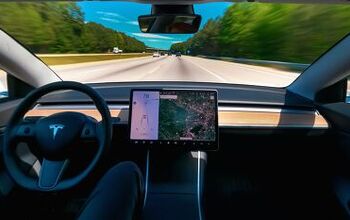

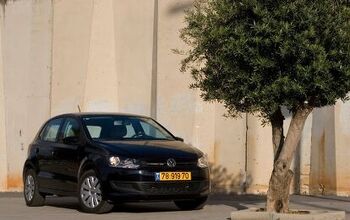



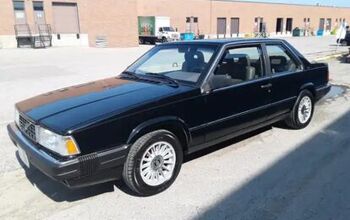
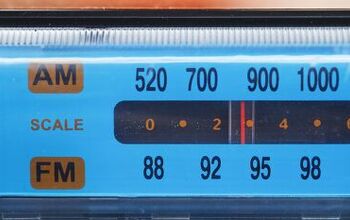

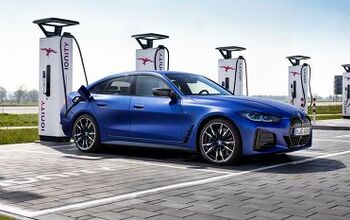
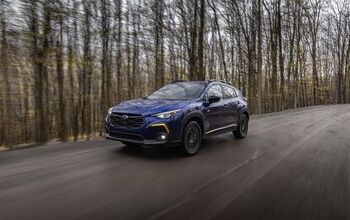
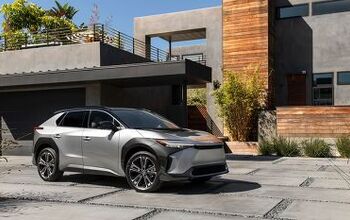
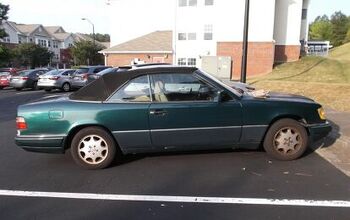
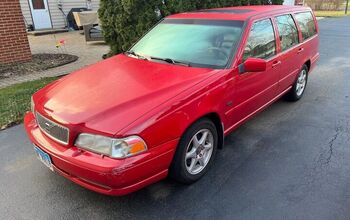

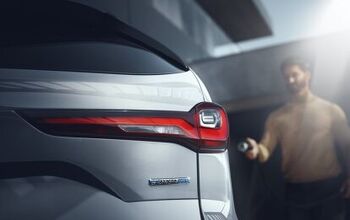

Comments
Join the conversation
That is a sweet lap of the nurburgring. The driver really pushes the car and even gets some oversteer out of it.
Doesn't the Octavia have an umbrella in the door feature like on a Rolls-Royce? Also, nobody has pointed out that the front of the Rapid looks JUST LIKE a Kia.